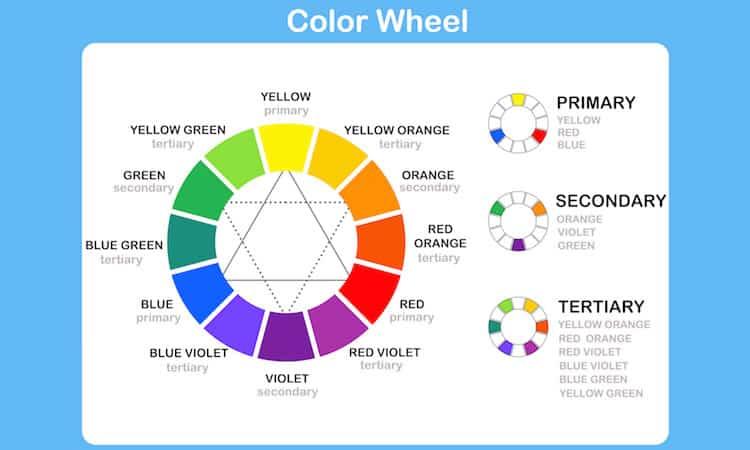Table of Contents
- The Psychological Effects of Color on Audience Perception
- How Consistency Enhances Brand Recognition and Trust
- Balancing Color and Consistency for Effective Visual Communication
- Practical Tips for Implementing Cohesive Color Schemes in Design
- Future Outlook
The Psychological Effects of Color on Audience Perception
Colors carry an incredible power to influence mood and perception, often operating below the surface of conscious awareness. For example, blue hues are known to evoke feelings of calmness and trust, making them a popular choice in corporate branding and healthcare sectors. Meanwhile, warm colors like red and orange can invoke energy, urgency, or excitement, which is why they often dominate calls to action and sale promotions. Understanding these psychological cues allows designers and marketers to craft visuals that align with the intended emotional response, reinforcing the message without the need for words.
Beyond individual colors, the way they are combined plays a crucial role in audience interpretation. A palette with too many conflicting colors can overwhelm viewers, diluting brand recognition and causing cognitive dissonance. In contrast, a well-curated color scheme creates a cohesive narrative by:
- Establishing visual hierarchy to guide attention
- Enhancing readability and clarity of content
- Evoking consistent emotional responses throughout the experience
By leveraging these principles, creators ensure their visuals don’t just attract the eye but resonate deeply with the audience’s subconscious, enhancing engagement and trust.
How Consistency Enhances Brand Recognition and Trust
Establishing a visual identity that remains consistent across every touchpoint cultivates familiarity, which is a crucial factor in building lasting brand recognition. When customers encounter uniform colors, fonts, and design elements time and again, they begin to associate those visual cues directly with your brand’s personality and values. This repetition serves as a subconscious reinforcement, making your brand easily identifiable even in crowded marketplaces.
Consistency also plays a pivotal role in fostering trust. A cohesive visual presence signals professionalism and reliability, suggesting to potential clients that your brand pays attention to detail and stands by its commitments. Consider these benefits of consistent branding:
- Memorability: Consistent visuals are easier to recall and recognize.
- Credibility: Uniform branding signals authenticity and stability.
- Customer Loyalty: Trust built over time translates into repeat business.
- Clear Communication: A unified look helps convey your message without distraction.
Balancing Color and Consistency for Effective Visual Communication
Achieving harmony between color and consistency is paramount for creating visuals that resonate and communicate effectively. Colors evoke emotions and can guide viewer attention, but when overused or inconsistently applied, they risk diluting the message. Consistency, on the other hand, anchors your design, ensuring that your audience recognizes your brand or message instantly. Striking the right balance means selecting a palette that aligns with your brand identity and applying it uniformly across all materials to foster trust and familiarity.
Consider these key practices to master this balance:
- Limit your palette: Restrict your color choices to a few complementary hues to create a cohesive look.
- Establish guidelines: Develop clear rules on color usage for various elements like backgrounds, text, and accents.
- Test for accessibility: Ensure sufficient contrast and legibility across devices for all users.
- Be adaptable: While consistency is critical, allow flexibility to evolve your color scheme subtly over time.
Practical Tips for Implementing Cohesive Color Schemes in Design
Start by creating a color foundation that aligns with your brand personality and target audience. Limit your palette to three to five colors, ensuring a harmonious balance between primary, secondary, and accent shades. Utilize tools like Adobe Color or Coolors to generate complementary combinations, but always test these colors across various devices and lighting conditions to maintain consistency. Remember, subtle variations in tone can create depth without overwhelming the viewer, so incorporate tints and shades to diversify without disrupting cohesion.
When applying your palette, consider these practical tactics:
- Establish clear guidelines in style guides covering where and how each color should be used across elements like backgrounds, typography, and buttons.
- Use contrast purposefully to enhance readability and focus, especially for calls to action and key information.
- Leverage white space effectively to avoid visual clutter and provide breathing room for your colors to stand out.
- Test accessibility ensuring your color choices meet standards for color blindness and visibility to create an inclusive experience.
Future Outlook
In the world of design, mastering the balance between color and consistency is essential for creating visuals that resonate and communicate effectively. By thoughtfully selecting color schemes and maintaining visual harmony, you not only enhance aesthetic appeal but also strengthen brand identity and user experience. Whether you’re crafting a website, developing a brand palette, or designing marketing materials, understanding the impact of color and consistency will empower you to make intentional choices that leave a lasting impression. Keep these principles in mind, and watch your work come to life with clarity and purpose.Check Our Other Blogs
- StunGun – Your Trusted Source for Stun Guns, Laws, and Self-Defense Tips
- PepperSprayLaws – Your Trusted Resource for Pepper Spray Information
- StunGunLaws – Your Trusted Guide to Stun Gun Legality and Safety




